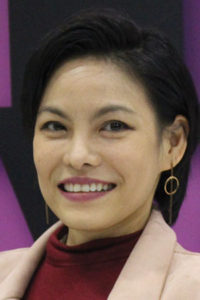BeanScene welcomes Jibbi Little to the editorial team as she demonstrates one of her favourite floating insects.
I finally did it. I’m sitting here writing my first editorial column for BeanScene and it’s because I’m an Australian Latte Art Champion.

Some might say it’s been a long time coming, but no-one knows the dedication and training I’ve put into my competition career more than I. It’s been a labour of love to come back year after year and put my best foot forward to show the judges my original patterns. Each year I look for that spark, that special something that will separate myself from all the other baristas all wanting the same thing as I do – to win, of course. This year was my turn. My fifth national competition and my fifth national final.
When my name was announced as the champion, I was in complete shock, so much so that I had to wait a second before reacting to make sure I hadn’t heard wrong. When the nodding heads in the audience and emcee Ross Quail confirmed the result, I screamed with sheer excitement and joy.
Now I’m training hard to compete in the World Latte Art Championship in Berlin in June. Until then, I’m excited to join the BeanScene team and share my love for latte art with you all.
My style is creative and crazy latte art creations, so before you come on a journey with me, ensure you have the latte art basics down pat (I’m talking tulips, rosettas, drags etc) because we’re not starting at the beginning. We’re jumping straight into it and recreating patterns I’ve used on the national stage.
For my first edition, I’m demonstrating my beautiful butterfly, a deceivingly challenging pattern. Don’t be fooled by its fluttering wings – it’s not just about how many rosettas you can pour down the cup, it’s about technique – continuous movement, correct hand position, and a tricky eye at the end inspired by 2017 World Latte Art Champion Arnon Thitiprasert’s Cunning Eye technique. But it’s all in the name of fun. I want you to enjoy the challenge, practice hard, pour thousands of cups, and keep trying until you produce something that brings a smile to your face and that of your customers. So come along on the ride, and let’s try some latte art.
Jibbi Little’s butterfly
Step 1
With your cup handle facing nine o’clock and the cup positioned in your fingertips, build up your base.
Step 2
In the centre of the cup, pour a three-leaf tulip to create the first wing.
Step 3
Underneath, pour six single tulips down the cup, with each one slightly overlapping each other in height, side by side. If you’re feeling adventurous, try a nine-leaf tulip in one go, pushing in one layer into the next down the cup.
Step 4
At the base of the last tulip drop, drag your pour in one long line along the right hand side of the pattern until the start of your first tulip.
Step 5
Continue the same drag and in one fluid movement pour a 10-leaf rosetta down the right hand side of the cup, in a tight squiggle action, or lots of little ‘S’ shapes.
Step 6
At the end of the rosetta, continue the drag of your pour up along the left hand side back to the top of the rosetta, but leaving a gap between the crema and white of the milk foam. This will form the butterfly’s wing.
Step 7
Rotate the cup handle to three o’clock. Pour a seven-leaf rosetta and pull up on the right hand side to create the butterfly’s body.
Step 8
To create the butterfly head, pour a semi circle or Q shape at the end of the body. Then, fill the middle with another pour, leaving a little gap of the coffee crema to show contrast. This will give the illusion of an eye.












